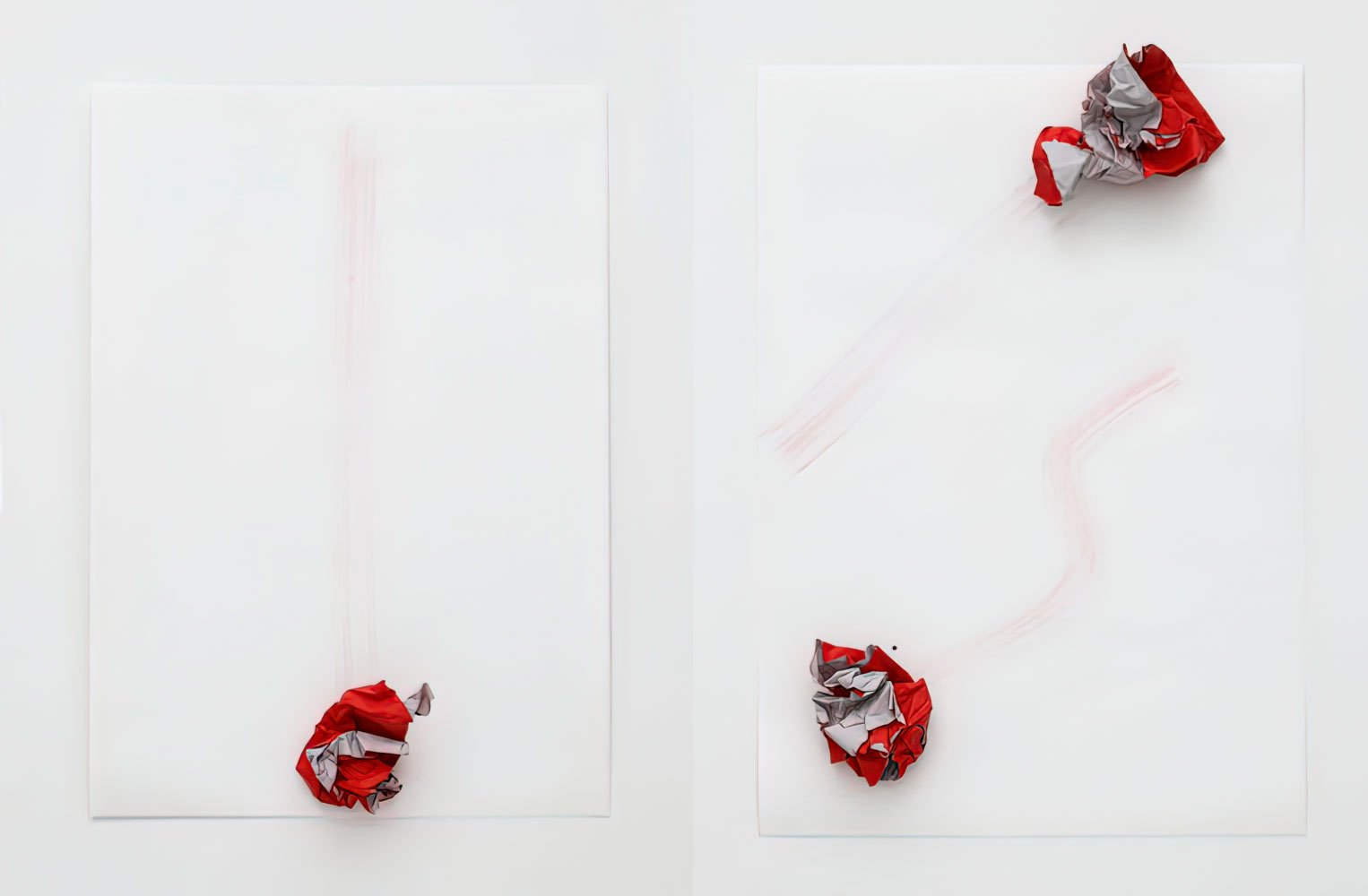PRESENTATION: Kishio Suga-Paper
 One of the key figures in Japan’s pivotal Mono-ha phenomenon of the late 1960s and early 1970s, artist Kishio Suga has realized a visionary practice of ephemeral, site-specific installations and performative interventions into the everyday environment. From almost imperceptible arrangements of natural materials at outdoor locations to sprawling structures presented in galleries and museums, his works challenge both the institution of art and anthropocentric perceptions of the world.
One of the key figures in Japan’s pivotal Mono-ha phenomenon of the late 1960s and early 1970s, artist Kishio Suga has realized a visionary practice of ephemeral, site-specific installations and performative interventions into the everyday environment. From almost imperceptible arrangements of natural materials at outdoor locations to sprawling structures presented in galleries and museums, his works challenge both the institution of art and anthropocentric perceptions of the world.
By Dimitris Lempesis
Photo: Blum & Poe Gallery Archive
Kishio Suga’s solo exhibition “Paper” is the first comprehensive survey of his work in this medium, which has rarely been exhibited outside Japan. Suga’s investigation of paper has been an integral part of his practice since the beginning of his artistic career, occurring in parallel with the large-scale installations and wall-mounted assemblages for which he is best known. The earliest work in this exhibition, “Untitled” (1968), was made shortly after Suga graduated from Tama Art University, when he worked for one year as a part-time studio assistant to Sam Francis in Tokyo. Watching Francis create his Edge paintings by moving around large canvases laid on the floor, Suga was inspired to think about the relationship of center and periphery in his own emerging practice. Painted with bright acrylics sourced from Francis’ studio, “Untitled” (1968) consists of rectangular fields of vivid red and blue, permeated with English words in various states of obfuscation and erasure. These colliding fields of color and fragments of negated language reflect Suga’s incipient interest in the discrepancies between words and meaning, and the need to allow material to speak for itself. Only months after creating “Untitled” (1968), Suga turned away from painting and toward making site-specific installations out of natural and industrial materials such as paraffin, concrete, wood, branches, metal, rope, and wire. He and a small number of other artists who worked in similarly ephemeral modes became known as Mono-ha (“School of Things”). Deeply immersed in the theoretical writings of Jean Baudrillard, Gilles Deleuze, Kitarō Nishida, Keiji Nishitani, and Mahāyāna Buddhism since his university years, Suga developed his own idiosyncratic philosophy of matter and space, which he articulates in terms of a holistic “interdependence” (izon) of all “things” (mono) “being left” (hōchi) in the “situations” (jōkyō) that unite them. As with Suga’s installations and assemblages, his works on paper show the evolution of the artist’s thought over the last five decades. During the 1970s, Suga experimented with various forms of mark-making and manipulation on different types of paper. In “Situation of Boundary” (1971) Suga applied diagonal strokes of white chalk to conjoined sheets of black sandpaper, emphasizing a unifying field that traverses the borders of multiple units within a greater whole. Suga also created geometric compositions out of tape, marker, ink, and torn edges, such as “Lateral Realm—174” (1974) and “Corner at Phases” (1975). By contrast, in “Quantity of Territory in Position” (1976) he employed frenzied, diagonal ballpoint pen strokes to counter the gridded order of graph paper. The early 1980s saw Suga continue to explore minimal interventions such as scoring corrugated cardboard in “Towards Order” (1981) and folding white paper to demarcate zones of space that he filled with gestural waves of pencil marks, as in “Traversing Things—11” (1982). Later in the decade, he resumed the use of brilliant fields of paint interspersed with pencil lines as a means of deconstructing the white expanse of the paper support. Suga further expanded his repertoire of painted interventions and types of support during the 1990s, creating more sprawling configurations of acrylic and mixed media on used envelopes and densely patterned wrapping papers. Since the 2000s, Suga has highlighted the duality of presence and absence by leaving geometric voids of unpainted space amid finely streaked grids of paint, such as in “Things that Go Against the Flow” (2007). Similarly, in “Oscillating Scenery” (2011), Suga dragged a ball of crumpled paper saturated with dark blue ink over a sheet of paper’s white expanse and affixed the ball to the end of the meandering line that it had traced. The work presents three-dimensional evidence of movement across a two-dimensional field—an almost calligraphic revelation of the fusion of material, line, gesture, and space.
Photo: Kishio Suga, Situation of Critical Boundary, 1972, Chalk on sandpaper, 30 parts; 11 x 9 1/16 inches each, 28 x 23 cm each, © Kishio Suga, Courtesy the artist and Blum & Poe Gallery
Info: Blum & Poe Gallery, 2727 S. La Cienega Boulevard, Los Angeles, CA, USA, Duration: 15/1-26/2/2022, Days & Hours: Tue-Sat 10:00-18:00, www.blumandpoe.com






Right: Kishio Suga, Dependent Space 974, 1974, Magic marker on paper, 27 15/16 x 20 5/8 inches, 71 x 52.4 cm, © Kishio Suga, Courtesy the artist and Blum & Poe Gallery

Center: Kishio Suga, Direction of Dimension 275, 1975, Magic marker and vinyl tape on paper, 27 1/2 x 21 inches, 69.9 x 53.3 cm, © Kishio Suga, Courtesy the artist and Blum & Poe Gallery
Right: Kishio Suga, Dependent Space 574, 1974, Magic marker and tape on paper, 28 x 20 5/8 inches, 71.1 x 52.4 cm, © Kishio Suga, Courtesy the artist and Blum & Poe Gallery

Right: Kishio Suga, Flowing Causes, 2011, © Kishio Suga, Courtesy the artist and Blum & Poe Gallery

Right: Kishio Suga, Progressive Placement, 1975, Pencil and pastel on paper, 21 5/8 x 15 3/4 inches, 54.9 x 40 cm, © Kishio Suga, Courtesy the artist and Blum & Poe Gallery
